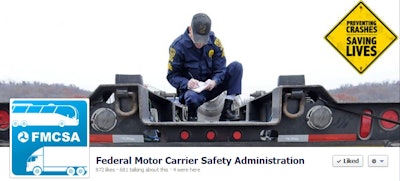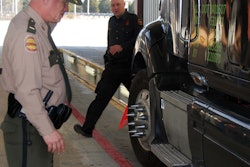The issue of public engagement in Regulatory Flexibility Act Section 610 reviews, which look chiefly at federal regulations for “significant economic impact on a substantial number of small entities,” or SEISNOSE, was one of a few major topics for discussion at the Aug. 28 meeting of an FMCSA committee. The Motor Carrier Safety Advisory Committee was tasked with providing recommendations on both methods of engaging the public and on priorities the FMCSA should hold as to the kinds of rules to review.
While the Department of Transportation has a routine process for reviewing and amending existing regulations, it is looking for ways to improve the process – chiefly by engaging the public in reviews. Said “Mr. Regulation” Neil Eisner, associated general counsel for the DOT, “The Administrative Procedure Act … gives the public the right to petition the agency not only to formulate a rule but to amend or repeal one.”
In addition, President Obama’s Executive Order No. 13563 requires “looking at rules periodically to make them more effective or less burdensome,” Eisner added. “This has been in place for years, but they wanted to put an emphasis on it.”
MCSAC members stressed that FMCSA should try to integrate review process outreach to the public via the tools it’s used during this administration to garner industry/driver input on specific regulations, such as the revised hours of service rule and the issue of electronic logs and driver harassment. MCSAC member Danny Schnautz, a vice president with Texas-based Clark Freight Lines, among others referenced FMCSA listening sessions conducted this year at both the Mid-America Trucking Show as well as a big CVSA conference.
Build an “email list that users can subscribe to so that everything goes out to them,” Schnautz added. “Share information and have the communication going both ways with it. Also, hopefully inspectors are sending information up when they’re seeing redundancies or misinformation.”
One such inspector, Bill Dofflemeyer of the Maryland State Police, urged the FMCSA to go well beyond standard Federal Register notices requesting public 
Smartphone apps like SaferBus, the FMCSA’s tool for consumers to vet motor coach companies’ safety records, as well as FMCSA’s newly launched Facebook page, also show potential as outreach tools for regulatory review.
Among regs recommended for prioritization for review included:

- Dofflemeyer noted regulatory language throughout the federal code referencing transponder technology that was well out of date for today’s world. “Now smartphones and everything else are out there,” he said.
- FMCSA should “elevate those rules which, based on CSA data, have little relationship to crash risk,” said Rob Abbott of the American Trucking Associations. Schnautz added, “If it’s not influencing crash risk, we don’t need it.”











